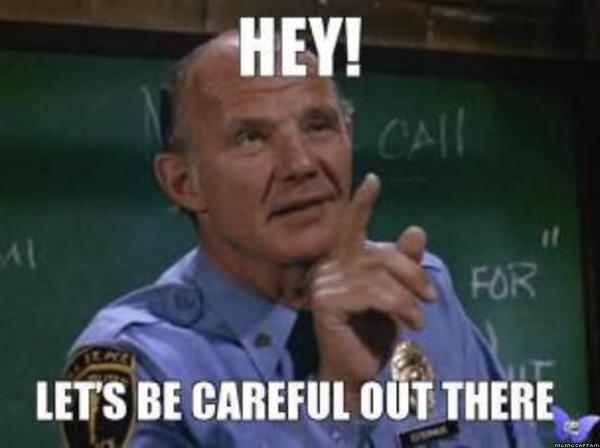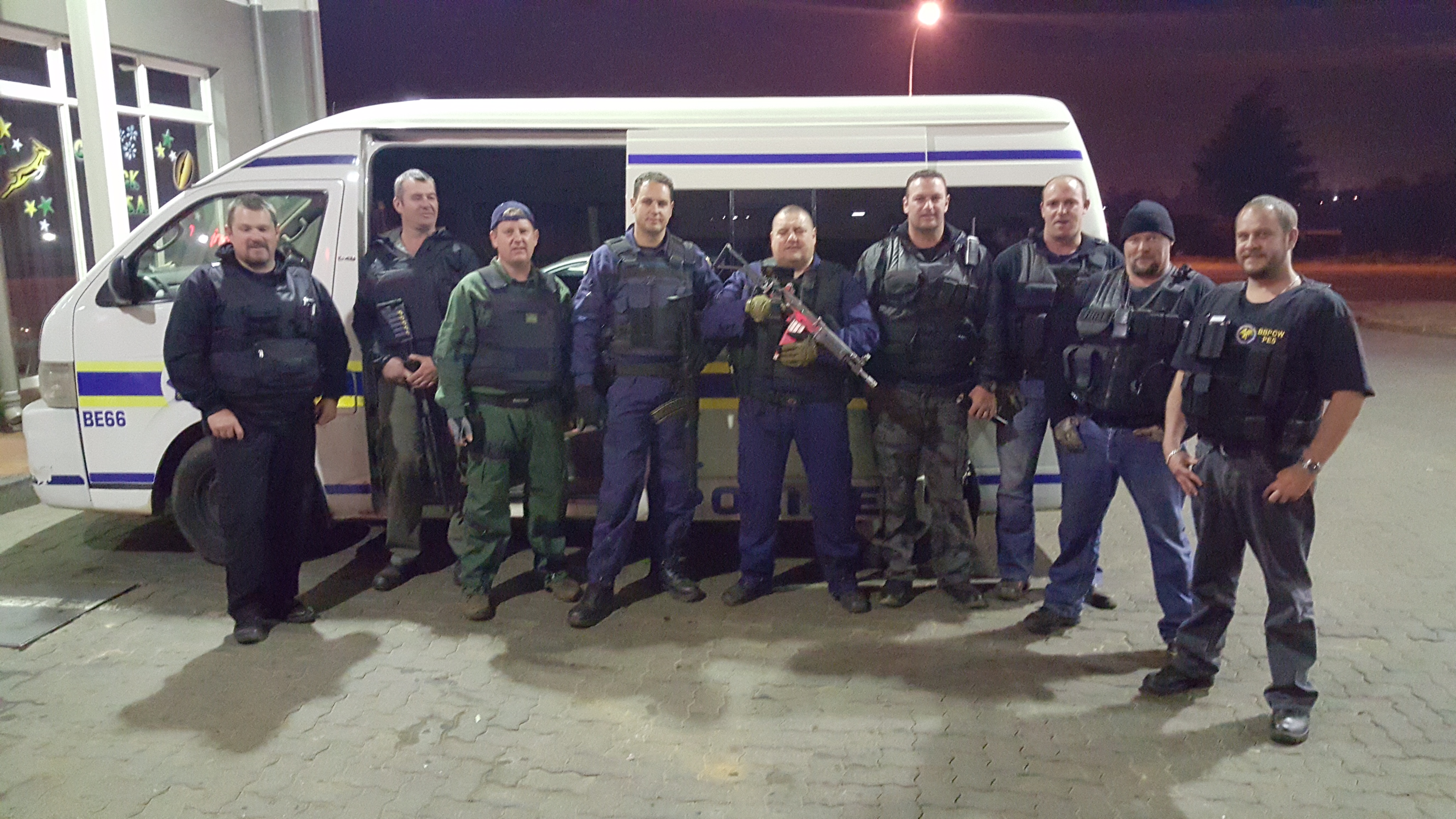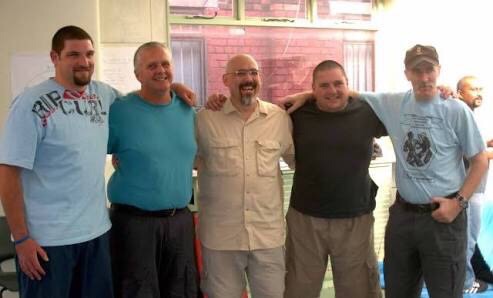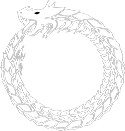I’m reposting this guest appearance from one of the South African Police Service’s best CQB and SWAT instructors. When I was invited to South Africa by Nelson Mandela’s new government in the 90s to work with the newly renamed South African Police Service (as opposed to South African Police FORCE), the SAPS led the world in violent paramilitary assaults on police. Given the recent spate of ambushes on police officers during traffic stops, the information below may be relevant.
I’ve been asked recently about the wave of anti-police sentiment and violence by everyone from major media outlets to friends at the coffee shop. All I have to say is that anytime we entrust our safety to others, we MUST hold those we entrust to a higher standard. Period. And the vast majority of police officers are honorable brave men and women who go in harms way, each and every day, to protect others and strive to do the right thing under difficult circumstances. There are exceptions, but most cops are straight up and do an admirable job of balancing a staggering amount of stress in a humane and reasonable fashion while dealing with some of the worst and most dangerous people on our streets. Higher standards, absolutely. And MOST cops despise the crooked, corrupt, cruel or inept who make their way into their ranks. See here my response to some of them: https://marcuswynne.wordpress.com/2015/09/08/repost-achy-man-on-corruption-reply-to-the-haters-and-chapter-two-of-threes-wylde/
Be safe out there.

COUNTER-AMBUSH FOR POLICE

My guest today is Master Trainer and Tactical Team Leader Clint Oosthuizen of the South African Police Service. Clint is my brother-from-another-mother. We go back to the mid-90s, when the South African Police Service (newly renamed from the former Police Force to Police Service to manage a new political narrative after Mandela took power) asked me to consult with their national executives, the Psychological Services Division and a number of their specialty units. During one of my stays in Sunny Africa I lived with Clint and his family. I rode with him and his police crew from day one, much to their amusement and my frequent terror.
Back then, in the aftermath of the long struggle between the apartheid government and Mandela’s political party the African National Congress, South Africa had the highest rates of crime-related violence in the world. Johannsesburg was the most violent city in the world, the leader in armed assault, homicide, forcible rape, and robbery. It was very much like William Fairbairn’s Shanghai, and it was Fairbairn’s work that inspired me to go there and learn from those who daily engage in high levels of professional violence.
To this day, it remains one of the world’s violent cities, and the job of the police officer is much closer to the counter-insurgency soldier in an urban environment than the job most American police departments are familiar with.
When I was there circa 1995-1996, the casualties among the 100,000 serving police officers in the SAPS were the highest in the world. Armed ambushes (firearms and edged weapons) resulted in over 250 dead cops a year.
Now twenty years later, the number of officers killed in direct fire (ambush) or edged weapon attacks is closer to 100 a year. Roughly 0.1% of the police force dies each and every year in some sort of ambush. That’s based on an average number of 100,000 for the total national police.
Clint is good enough to take the time here to share some of his street wisdom derived from 20+ years at the very hard edge in police patrol and SWAT operations. He and his crew have been tested in innumerable gun-fights (defined here as engaging in close combat with firearms with a resisting foe(s)) and many bladed encounters. In addition to SWAT, patrol, K9, Training and various specialty units, Clint also spent several tours in the Middle East doing high-risk Protection Security Details with my late great friend Rich Smith, of the Rhodesian SAS and other elite units.

Rich (second from left) at the Neural-Based Instructor Course. Conrad (RIP), Rich (RIP), some Old Guy from the NDE Club, Clint newly initiated into the NDE Club, and the indestructible Dennis Martin
Clint’s been there and done that; he didn’t just see the elephant but French kissed him (several times) and survived the dreaded rhino slap…tale to be told another time.
Clint’s perspectives on police patrol procedures, and the individual and unit training necessary to survive and thrive in an environment where police are everyday targets of opportunity for heavily armed, highly motivated and tactically proficient criminals may be of interest to police trainers, police officers and armed civilians watching the evolution of violence on the American streets.
Here’s Clint Oosthuizen, Police Officer, Combat Leader, Gunfighter, Bon Vivant, Force of Nature and a man I’m proud to call my friend and brother:
Clint: Oi, mate! As you know, our police history has always been one of extreme violence. We lose about 100 officers a year (down from the bad old days) to ambushes, which include shootings, explosions (grenades, mostly) and edged weapon attacks (pangas, like a machete, as well as other knives). This doesn’t count accidents or guys wounded on duty who are unable to return to duty. That’s a much higher count, but I don’t have those exact numbers. So far this year to July, we’ve lost around 80. Of those 60% (48) were killed with their own weapons.
Random Tips
• When we work, we always have 2+ officers. Never less than 2.
• When we go Alpha (respond to a complaint) we don’t use sirens unless we have to; we run lights and shut them off when we’re a block or so away.
• We never roll up on the address. We always stop 1-2 houses away, and then we walk in using a standard cover formation. That means one officer handles the contact/initial interview and the rest of us provide all around cover. That means covering the suspect and any other individuals, the house, the surrounding houses, the yards and alleys. All around defense, all the time.
• If we tactically penetrate a building we come out the same way unless back up has arrived.
• If we arrive on a scene and find blue lights there with an officer we don’t know, we watch the officer for pre-violence indicators as they might be bad guys disguised as SAPS police officers, or crooked SAPS officers committing a crime. We actually run into that quite a bit, LOL.
• When we embuss (get back into the vehicle) the driver enters first while we cover him; he starts the car and puts it into gear, then we get in. That way you always have boots on the ground ready to fight if you have to until you’re able to get away fast in the vehicle.
• When we do a car stop we are always ready to shoot. Always. One guy talks to the driver while the other guy covers with all around defense. We get a lot of drive by shootings on car stops.
• When we approach the car it’s always from the rear. We check the hood and move no further than the rear windows. Our stand off shooter will always cover and move with the officer making the contact; the stand off shooter has to have eyes in the back of his head because he has to watch his partner AND approaching vehicles AND the local environment. Hard work.
• If we get ambushed while mobile our SOP is drive through.
• If we can’t drive through, we debuss (get out of the vehicle) and lay down suppressive fire and flank or retreat tactically.
• If we can’t debuss, we lay flat and return fire through the windscreen (windshield) or through the door. We then exit and lay down fire by shooting around, through or under the vehicle and exit the kill zone to flank/regroup/escape. Comms are vital between you and your partner and with incoming backup.
• When we chase somebody we always chase with a partner. We never leave our partner alone. Ever.
• We see a lot of grenade attacks. We train to take cover, or get at least 7 meters (21 feet) away, go face down, cover our ears, open mouth, and after the bang goes off we roll to a supine position and shoot back at the bad guys.
• For car tactics, you must work with your partner on comms and SOPs. When you’re ambushed in the car or on foot, you can’t be f**king about, so you must work it out before and practice it together. You must know how your vehicle handles at speed or damaged, and what kind of rounds do what kind of damage to your car. And wear your plates!
• You must make sure that everyone on your shift also has agreed upon and trained comms and SOP so there’s no blue on blue when your backup rolls in to help you while you’re in or exiting the kill zone.
• Individual officer skills, well you must be fit, and you must train in all the fighting disciplines: shooting, knife, baton, CQB applications, SOPs. It must all seamlessly integrate because in a fight how you win is irrelevant as long as you win.
• Your gear must be 100% even if you must buy it yourself; you can’t afford failures.
• I advocate blade skill. We are a knife culture and we see them every single day. Being able to use a knife is very useful in the close quarter engagements we find ourselves in. You can use it to defend your gun, or if you can’t get to your gun or you are disarmed of your gun it’s also useful in a team take down of a suicide bomber or grenade thrower (cutting the ligaments on the activation hand, etc.)
Clint, can you discuss situational awareness and what kind of weaknesses the police officer must be aware of?
You remember that video you mentioned in chat that showed the American SF team in Iraq and the American SWAT? The difference? In that, the American police focus on the target structure, and even the perimeter team is focused on containing the threat…not looking for threat outside the perimeter. In the SF video, they cover all nearby houses when they enter. One of the best points was the movement inside the building. The police just pass the windows once they are inside, the SF cover out the windows in case they are hit from outside.
So the point is that police must learn how to see like soldiers do, and look further around, up and down, near and far, to be situationally aware enough to see an ambush coming or at least fight through one.
While there are significant numbers of veterans in the American police forces, I don’t think the training on counter-ambush and combat situational awareness has filtered through the liability conscious administrations. Definitely some exceptions, but not many.
We had a lot of the same problems. Lot of political correctness from people who don’t ride the car or the van into the shit. So we do the best we can with training, but sometimes you just have to take it on and train with your partner as best you can, and if you have a crew you train together even if you have to arrange it yourself. Your life, oke.
You routinely see a much higher level of skilled violence in your incidents down there. The American police are just starting to get more exposed to the somewhat tactically proficient active shooter or terrorist, and while we’ve been fortunate to avoid a Paris or Mumbai, the consensus is that will be the wave of the future…not if, but when…and where.
When we started out, you remember, LOL, we had a lot of military trained criminals who had recent military experience and training from the long conflict. When they didn’t get what they wanted from the new administration, they used their skills to go out and get what they wanted. Most of them had no other education besides fighting. So we’ve always encountered those proficient at buddy team, squad and platoon sized fire fight tactics, understood fire and maneuver, how to utilize heavy weapons and hand grenades, etc. Our tactics had to evolve to face that. Just like Americans, our first response is generally a car with two officers, so what we do has to be robust enough to deal with an ambush or skilled attack right off. We have to survive till our back up or the tactical response van gets there, LOL.
Can you comment on individual skills training for officers? You mention that you can’t depend on the Training Section to give you all you need, and that you must train with your partner even if you have to find your own time, gear and range.
Basic and recurrent training is never enough. If you are serious — and if you are not serious you will die, be badly hurt, or end up hiding in the station for your entire career – then you must train individually, with your partner, and with your team if you are in tactical response. On the individual level, you must be fit. Fit enough to fight for your life in a crowd, outnumbered and down. Fit enough to run the f**k away if you must, LOL, or run to help another officer. You must be proficient in using your gun. Not just shooting scores or nice groups, but being able to shoot while fighting, while someone is grabbing your weapons, in a crowd of non-shoots, and so on. You must know without a doubt what you can and can’t do with your weapon and shape your tactics around that. With your partner, you must be able to read each other’s minds. Like you taught us, LOL. You have to be able to read body language of your partner and of others. Sometimes you can’t say anything, you just have to read the situation and act. That’s one level of comms. You must know how to use the radio and have a back up for when it doesn’t work. Like my smartphone, LOL. You must be able to fight out of, around, under, and over your vehicle. You must be able to drive the vehicle under stress, under fire, and while damaged. You must know how to respond to IED attacks and grenade attacks in the car and on foot and respond as a team.
You have to know how to handle a blade. A blade and knife at the same time, or just a blade, coming at you or in your hand. And your baton of course. We have the long guns as well (remember your R5?).
An individual officer must take the time to get and keep his skills up. If he does not, he will die or be badly injured, or else cause some of us who come to back him up to be killed or badly injured. In that case we will beat his ass at the station after, LOL.
Clint, thank you so much for taking the time to share your hard-earned expertise and wisdom with American law enforcement. If people want to ask you questions, they can post here. Thanks again, Oke!
Happy to help! Looking forward to seeing you again! And this time we won’t feed the lions! ; )

